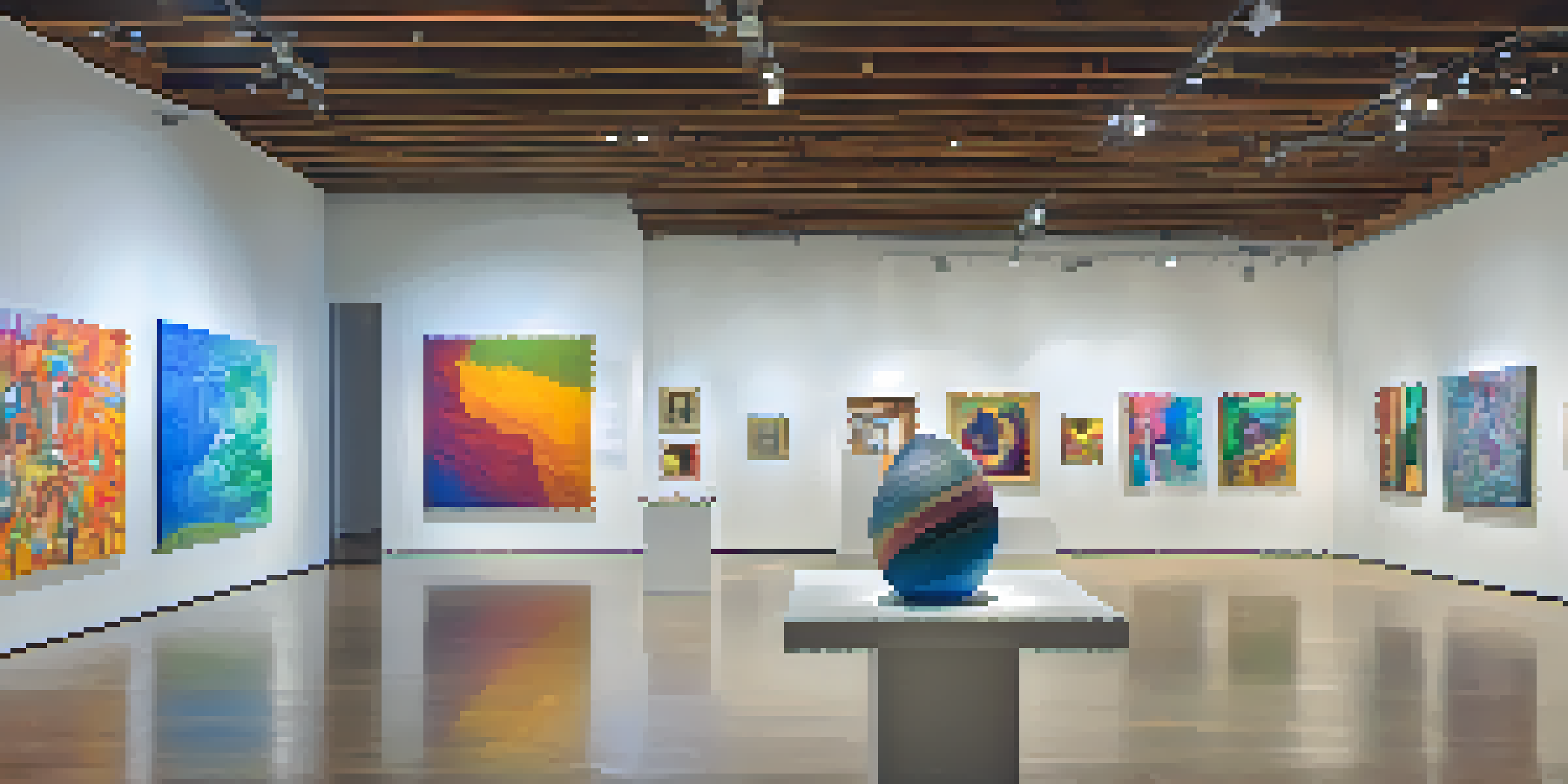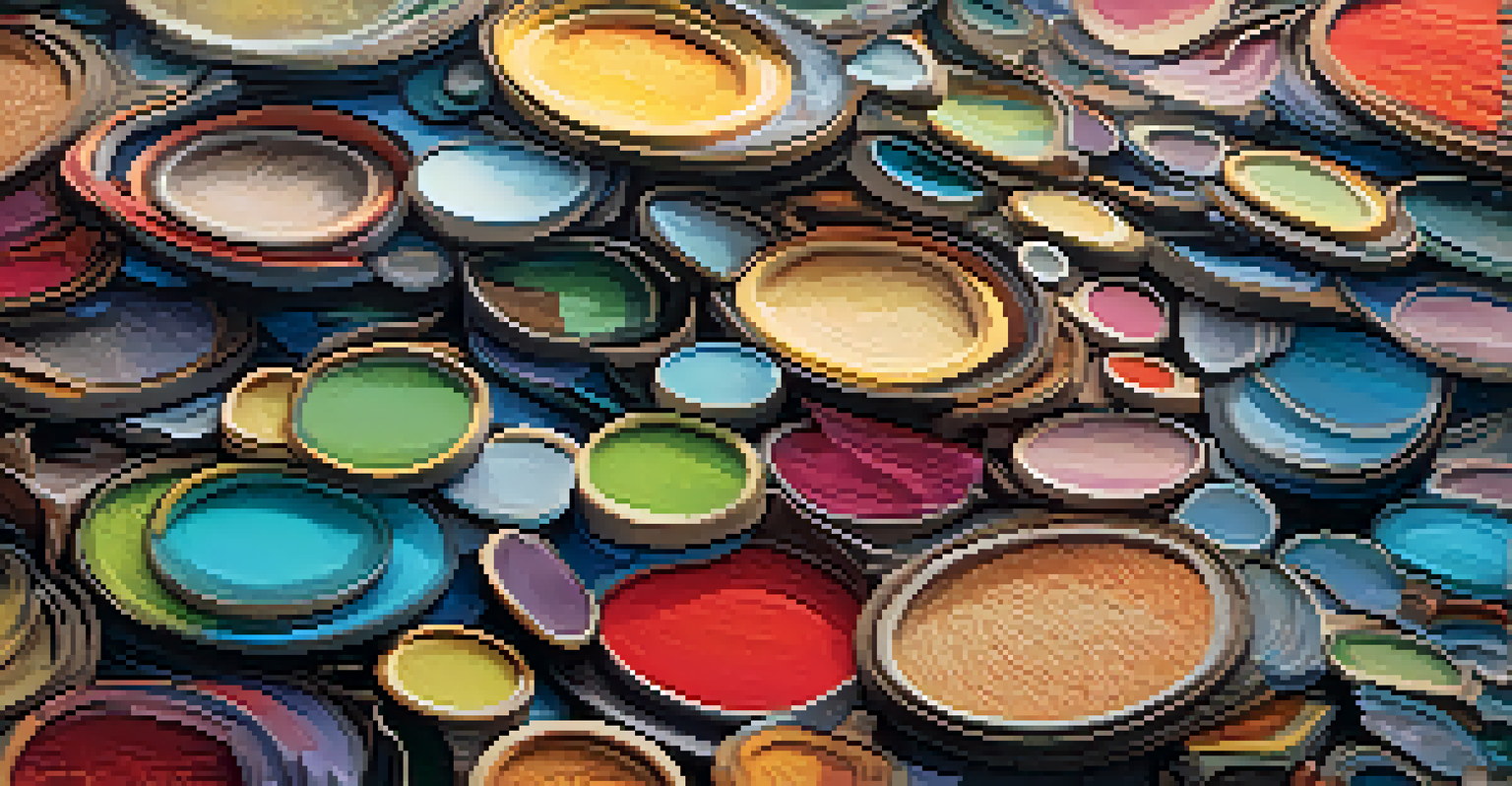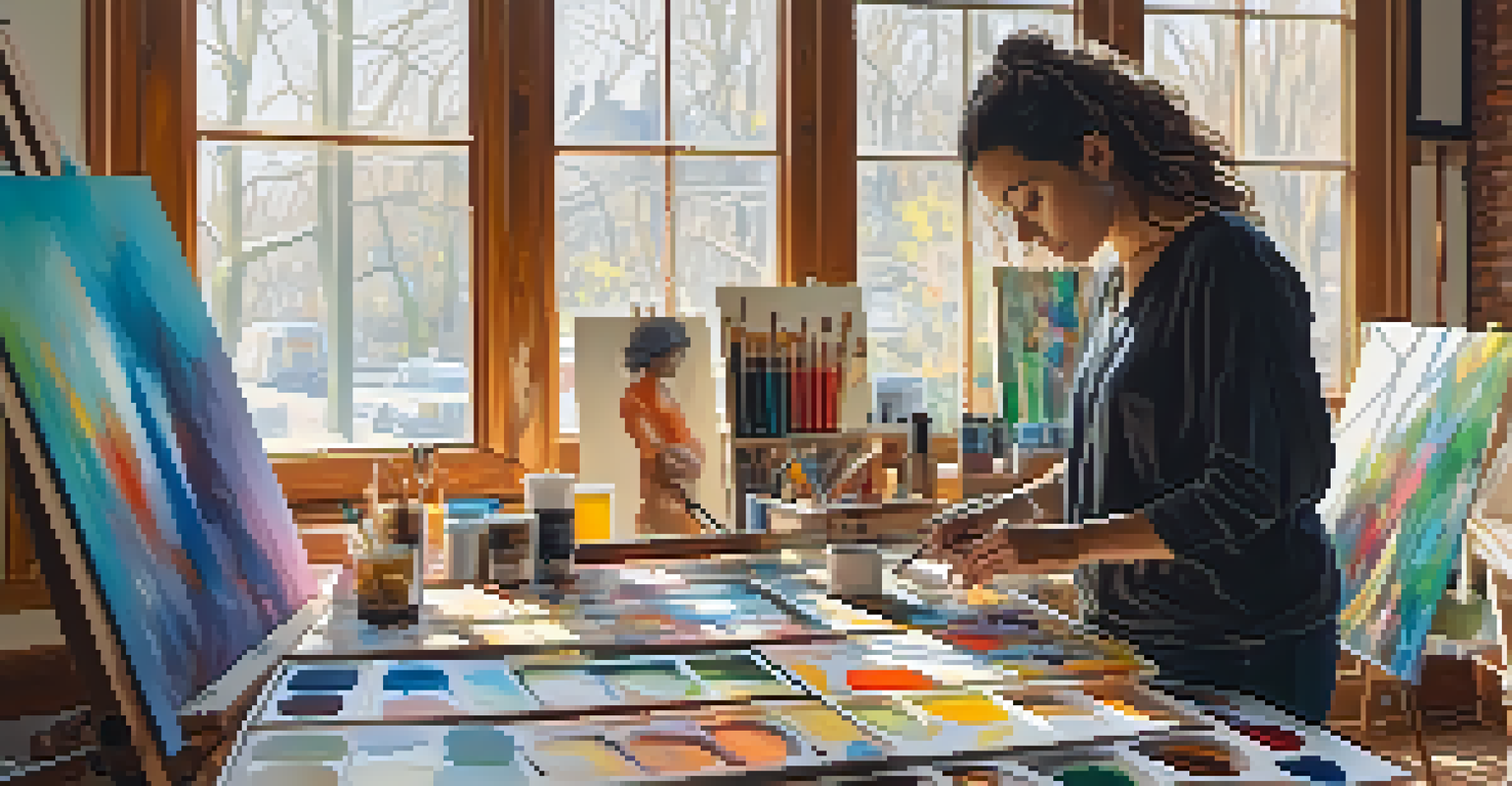Emerging Artists: A Guide to Collecting New Talent

Why Collecting Emerging Artists is Valuable
Collecting art from emerging artists can be one of the most rewarding experiences. Not only does it allow you to support up-and-coming talent, but it also offers the potential for significant value appreciation over time. Just think of it like investing in a startup; the earlier you get in, the more you can benefit if they succeed.
Every artist dips his brush in his own soul, and paints his own nature into his pictures.
Moreover, emerging artists often bring fresh perspectives and innovative techniques to the art world. This means that when you collect their work, you're not just acquiring art; you're becoming part of a movement that champions new ideas and creativity. You’ll find that this can lead to deeper conversations and connections within the art community.
Finally, collecting emerging artists can be an exciting journey of discovery. Each new piece you acquire tells a story, connecting you to the artist’s vision and journey. This personal touch can make your collection uniquely yours, filled with art that resonates with your experiences and values.
Where to Discover Emerging Artists
Finding emerging artists can be as thrilling as collecting their work. Start by visiting local galleries, art fairs, and exhibitions that focus on new talent. These venues often showcase a diverse range of artists, allowing you to explore various styles and mediums all in one place.

Online platforms have also become a treasure trove for discovering new artists. Websites like Instagram and platforms such as Artsy or Saatchi Art provide a global stage for emerging talent. Many artists use social media to share their work and connect with collectors directly, making it easier than ever to find that perfect piece.
Support Emerging Talent
Collecting art from emerging artists allows you to back new talent while potentially enjoying significant value appreciation over time.
Additionally, consider joining art collectives or communities, both online and offline. Networking with other art enthusiasts can lead to recommendations and insights about artists who may not yet be on your radar. This collaborative approach not only enriches your collection but also strengthens your ties within the art community.
Understanding Art Styles and Mediums
When collecting art, it's essential to familiarize yourself with different styles and mediums. From abstract to realism, each style speaks to different emotions and experiences. Understanding these can help you make more informed decisions about what resonates with you and what you want to collect.
Art enables us to find ourselves and lose ourselves at the same time.
Furthermore, the medium can significantly influence the artwork's character and value. Paintings, sculptures, photography, and digital art each have unique qualities and appeal. For instance, a mixed-media piece might blend traditional painting techniques with modern technology, creating a captivating dialogue between the old and the new.
Consider your personal aesthetic and the themes that matter to you when exploring styles and mediums. Collecting art that reflects your tastes not only enhances your space but also creates an environment that feels authentically you. Remember, there's no right or wrong in art; it’s all about what moves you.
Building Relationships with Artists
One of the most rewarding aspects of collecting art is building relationships with the artists themselves. Engaging with them can provide insight into their creative process and the stories behind their work. This connection can transform your collection into a narrative that is deeply personal and meaningful.
Attending artist talks, exhibitions, and open studios can be great opportunities to meet the artists. By showing genuine interest in their work and asking questions, you can forge a bond that often leads to exclusive opportunities to purchase their art before it hits the mainstream market.
Explore Diverse Art Styles
Understanding different art styles and mediums helps you make informed decisions that resonate with your personal aesthetic.
Additionally, many artists appreciate collectors who support their journey. Sharing their work on social media or recommending them to fellow art enthusiasts can help them gain visibility. This symbiotic relationship not only enriches your experience but also contributes to the artist's growth and success.
Budgeting for Your Art Collection
When starting your art collection, it’s crucial to set a budget that aligns with your financial situation. Collecting should be enjoyable, not stressful, so it’s wise to determine how much you can comfortably spend. This will help you avoid buyer's remorse and ensure you make thoughtful purchases.
Keep in mind that collecting emerging artists often provides more affordable options compared to established names. This means you can build a diverse collection without breaking the bank. Consider allocating a portion of your income specifically for art, treating it as an investment in your personal enjoyment and expression.
Lastly, remember that investing in art isn't just about the initial purchase. Consider ongoing costs, such as framing, insurance, and maintenance, which can add up. By planning ahead, you can ensure your art collection remains a source of joy and inspiration for years to come.
Caring for Your Art Collection
Once you've started your collection, proper care is essential to preserve the integrity of your pieces. Each artwork may require specific conditions, such as temperature control or lighting considerations. Familiarizing yourself with these needs will help maintain the artwork’s quality and longevity.
For example, works on paper might need to be framed under UV-protective glass to prevent fading, while sculptures could require regular dusting. Treating each piece with care shows respect for the artist’s work and enhances your enjoyment of the collection.
Build Artist Relationships
Engaging with artists not only enriches your collection but also fosters meaningful connections and insights into their creative processes.
Additionally, consider documenting your collection, including purchase details, artist information, and any stories behind each piece. This not only helps with insurance but also creates a personal archive that can be shared with future generations, ensuring the legacy of your collection lives on.
The Joy of Sharing Art with Others
Collecting art is not just a solitary pursuit; it can be a joyful experience to share your passion with others. Hosting small gatherings or open studios can foster conversations about the pieces you've collected and the artists behind them. This not only enriches your experience but also introduces your friends to the world of emerging art.
Moreover, sharing your collection can inspire others to explore their artistic interests. You might ignite a spark in a friend who had never considered collecting before. This community-building aspect of collecting can lead to lasting friendships, as you bond over shared interests and discoveries.

Finally, don't hesitate to share your collection online. Posting about your favorite pieces or the stories behind them can engage a wider audience and even connect you with other collectors. In this digital age, your passion for art can transcend physical boundaries, creating a global community of art lovers.